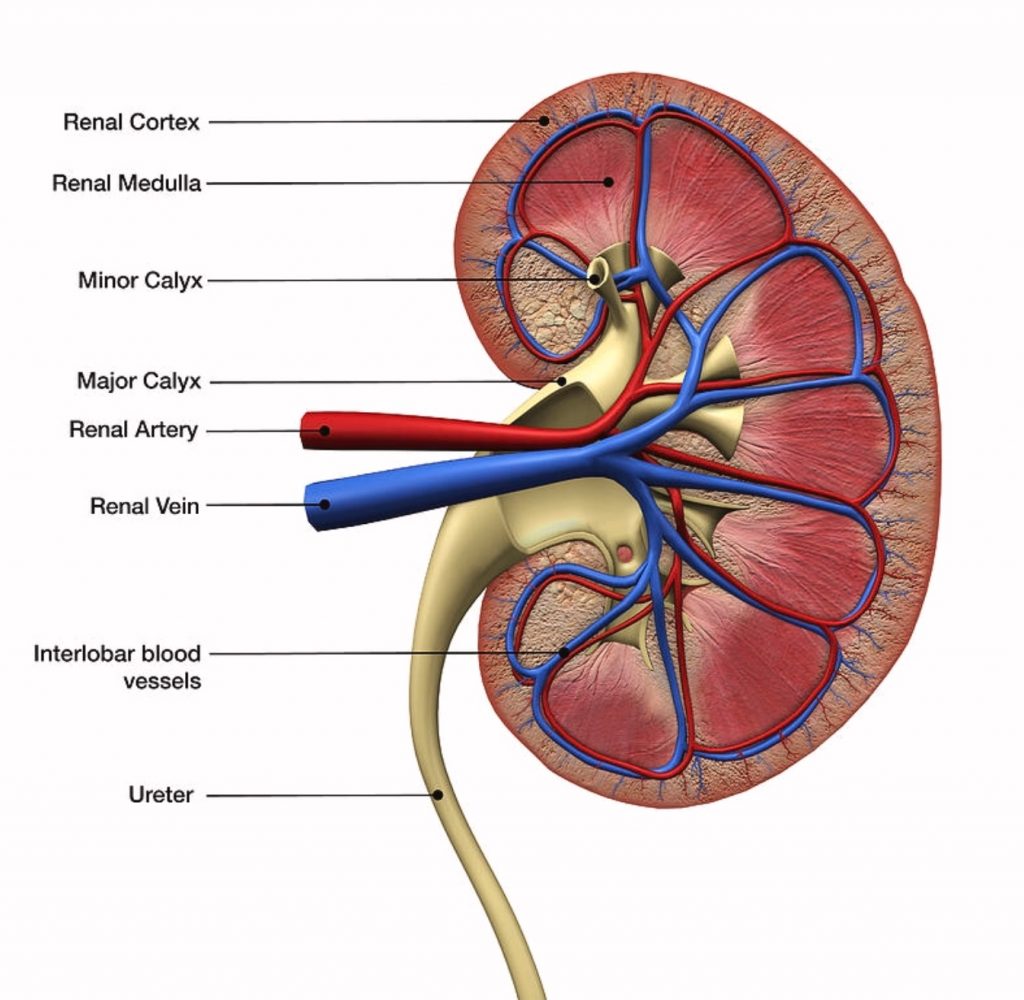“Organ donation saves lives and it is very important that every person has the power to save a life by becoming an organ donor. It is a noble gift because you can give someone a second chance at life.” – Dr. Teodoro J. Herbosa, former health undersecretary
It all started when Louie S. Puracan, a firefighter from Bansalan, Davao del Sur, went to a hospital for his regular medical checkup in 2009. The doctor noticed the creatine level of the patient was increasing.
The doctor was worried knowing the patient was already 41 years old. So, he talked with him wanting to find out if what he assumed was right. During their conversation, Louie disclosed that he was 30 when arthritis started to knock him out. To get rid of the agony, he resorted to taking pain relievers. Hearing this revelation, the doctor told him that most pain relievers can cause kidney disease.

The doctor then advised him to undergo a glomerular filtration rate (GFR) to measure the level of his kidney function and determine the stage of kidney disease at the National Kidney and Transplant Institute in Quezon City. (At that time, he was working at the Bureau of Fire Protection at Calamba, Laguna).
Puracan did. “The result caused me sleepless nights,” he recalled. “My kidney functions rate was 60% and it was irreversible. Upon hearing that diagnosis, my world seemed to collapse. The only thing doctors could do was to delay the progression.”
The kidneys, two bean-shaped organs which measure about 4-5 inches each, produce urine from waste products removed from the blood. While most people have two kidneys, there are few who are born with only one. “All functions normally performed by two kidneys can be carried out adequately by one healthy kidney,” according to The Merck Manual of Medical Information.
Unknowingly, health problems affecting the kidneys are becoming common compared to in the past. In you go to a street and ask an average man of what medical problem they fear most, they would either mention stroke or heart attack. “Many Filipinos don’t realize that developing kidney failure can be just as disabling and life-threatening,” says Dr. Rafael R. Castillo, a cardiologist at the Manila Doctors’ Hospital.
The Department of Health (DOH) reports that one person dies every hour from kidney failure. Every year, more than 7,000 cases of kidney failure in the country are recorded. This puts kidney failure as the ninth leading cause of death among Filipinos today, according to the National Kidney and Transplant Institute (NKTI).

In fact, for every one million Filipinos, 120 of them are most likely to develop kidney failure, NKTI claims.
As stated earlier, healthy kidneys clean the blood in the body by removing excess fluid, minerals, and wastes. Not only that, kidneys also make hormones that keep the bones strong and the blood healthy. But if the kidneys are damaged, they don’t work properly.
Harmful wastes, it has been found, can build up in the human body. Blood pressure may rise that may cause hypertension. When the body retain excess fluid and do not make enough red blood cells, kidney failure may result.
The Philippine Renal Disease Registry Annual Report in 2008 listed the three top leading cause of kidney failure were diabetes (41%), an inflammation of the kidneys (24%0 and high blood pressure (22%).
“If your kidneys fail, you need treatment to replace the work they normally do,” says the National Institute of Health in the United States. “Before dialysis was available, total kidney failure meant death,” says the US National Kidney Foundation (NKF). “Today, people with kidney failure can live because of treatments such as dialysis and kidney transplant.”
According to medical experts, dialysis is a way of cleaning the blood when the kidneys can no longer do the job required from them. Dialysis gets rid of the body’s wastes, extra salt and water aside from helping control the blood pressure.
Actually, there are two kinds of dialysis: hemodialysis and peritoneal dialysis. “In hemodialysis, blood is pumped out of your body to an artificial kidney machine, and returned to your body by tubes that connect you to the machine,” NKF explains. “In peritoneal dialysis, the inside lining of your own belly acts as a natural filter. Wastes are taken out by means of a cleansing fluid called dialysate, which is washed in and out of your belly in cycles.”
Kidney disease, particularly end stage renal disease (ESRD), is now one of the leading causes of death among Filipinos, recent statistics show. For patients with ESRD, a kidney transplant is often the only hope for survival. While the number of patients with ESRD is increasing, the number of living and deceased kidney donors remains dismally low.
Dr. Enrique Ona, who used to be the director of NKTI before he became health secretary, said that kidney transplantation is cheaper than dialysis “in the long-term.” “Moreover,” he added, “survival rates and quality of life in transplants are much better.”
But the problem is: only very few Filipinos are willing to donate their kidneys. A news report by Philippine Star said that glaring gap: “In 2015, almost 14,000 patients with kidney disease started dialysis, while only 475 people, or 3.4 percent, received a kidney transplant, which means that only a few people are willing to donate one of their kidneys.”
There is also the problem of cost. An in-depth report by Romina Angangco Danguilan for the online site of ABS-CBN said for a government subsidized patient and the donor, the cost of transplantation is about P200,000. In private hospitals, the cost range from half a million pesos to one million pesos.
“It is a large amount to be paid at a single confinement and equals eight months of dialysis,” Danguilan wrote. “However, the patient recovers sufficiently and become healthy enough to go back to work, earning to pay for maintenance medications.”
In the long run, transplantation is cheaper compared with dialysis which is life-long. “Adequate dialysis costs from P25,000 to P46,000 per month or P300,000 to P552,000 annually,” Danguilan wrote. “If one is able to afford this lifelong treatment, then the patient will be well-enough to return to his normal way of life, and just apportion time for dialysis treatment.”
Most doctors say kidney transplantation is still the best solution to resolve kidney failure as compared to dialysis. Thiswas what Puracan was also thinking. So, he requested for transfer to Davao City to be near his family. His appeal was granted in 2011 and was under the care of Dr. Maria Theresa Bad-ang, a nephrologist. “By that time, I was losing weight, felt dizzy every now and then, and hopeless,” he said.

In 2016, when the result of his GFR test was placed at 21%, Dr. Bad-ang recommended for preemptive transplant. “She didn’t want me to undergo dialysis as it would entail more expenses on my part,” he said. “She advised me to look for possible kidney donor as soon as possible.”
By this time, Puracan was getting weak and felt catching his breath. Family members and relatives knew the situation and so a clan meeting was held in Bansalan. Four cousins and his adopted sister volunteered to be his donor.
In January 2017, the doctor stated doing the laboratory work for cross-matching. Here, blood from the donor and recipient are mixed. If the recipient’s cells attack and kill the donor cells, the crossmatch is considered positive. This means the recipient has antibodies “against” the donor’s cells. If the crossmatch is negative, the pair is considered compatible.
His adopted sister, then 30 years old and married with three children, was a perfect match for Puracan. He had his transplant operation on May 16, 2017 but not without a hitch.
“As soon as the surgeons took my adopted sister’s kidney from her body, the kidney turns into grey,” he said. “The doctors gave 40% chance and assured me that the kidney will function in my body. They explained that situation like this happens. Some have even acute kidney rejection right after the transplant.”
After 16 days at the hospital, Puracan was finally released from the hospital. “During the next four months, I was in and out of the hospital for nine times,” he said. “It was really a rollercoaster ride. There was a time that I thought of giving up as I can’t bear the pain anymore.”
In addition, he had problem getting sleep and the restless legs syndrome irritated him so much. “The thing that I really hated most is the never-ending episodes of vomiting,” he said. “I vomit almost all day, which causes dehydration and weakens my body.”
To get rid of sleeplessness, the doctors gave him sedatives. In October last year, he had to undergo a kidney biopsy as his transplant team thought he was undergoing kidney rejection. Surprisingly, his creatine level rose to 225%.
“At present, I feel better,” he now says. “I’m back to my work but mindful of my diet. I’m so happy that the Lord extended my life leading me to the right people, my nephrologist and the transplant team. And to my sister, who shared her life with me by giving her kidney. I could not survive the crucial six months period without my family whose prayers and encouragement give me the courage to fight for it.”
There’s no need to worry for those who want to undergo kidney transplantation. After all, there are now reputable Filipino doctors who can perform such kind of surgery. In addition, there are new drugs and improved surgical techniques that can make transplants safer and more successful.
“The survival rate of organ transplants is quite encouraging,” the NKTI said in a statement. Its data showed that the survival rates for kidney transplants during the first year were registered at 90%-95% for living-related donors and about 80%-85% for diseased organs donors. “These rates are comparable with the survival rates of similar transplants in other parts of the world,” the institute said.






